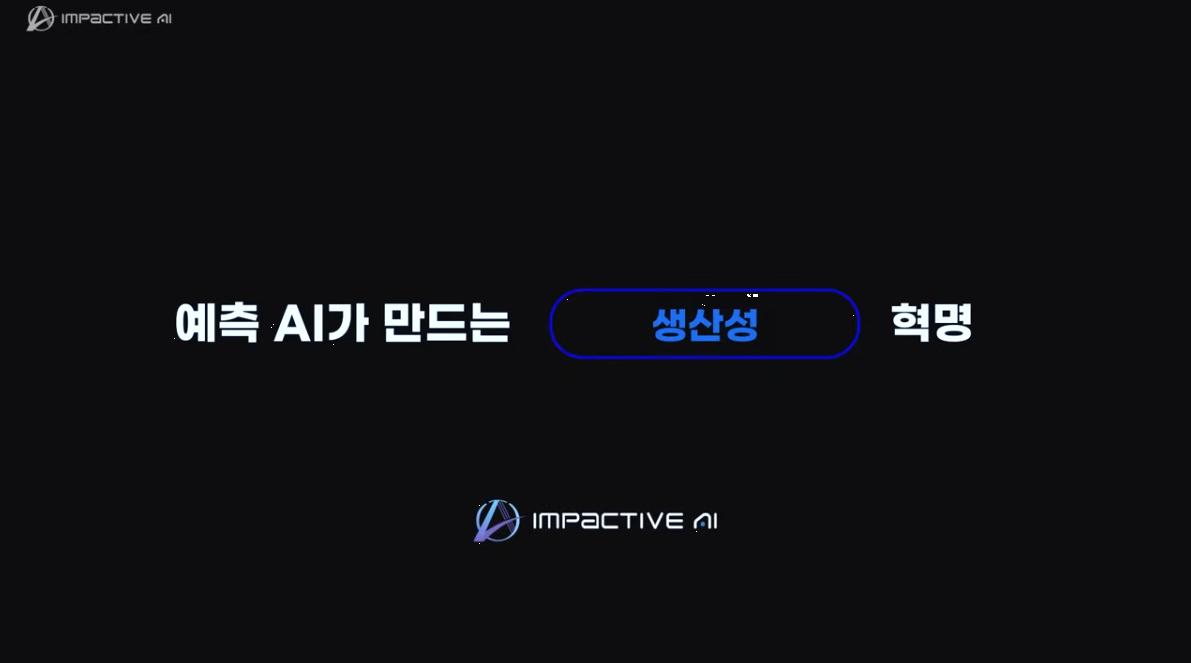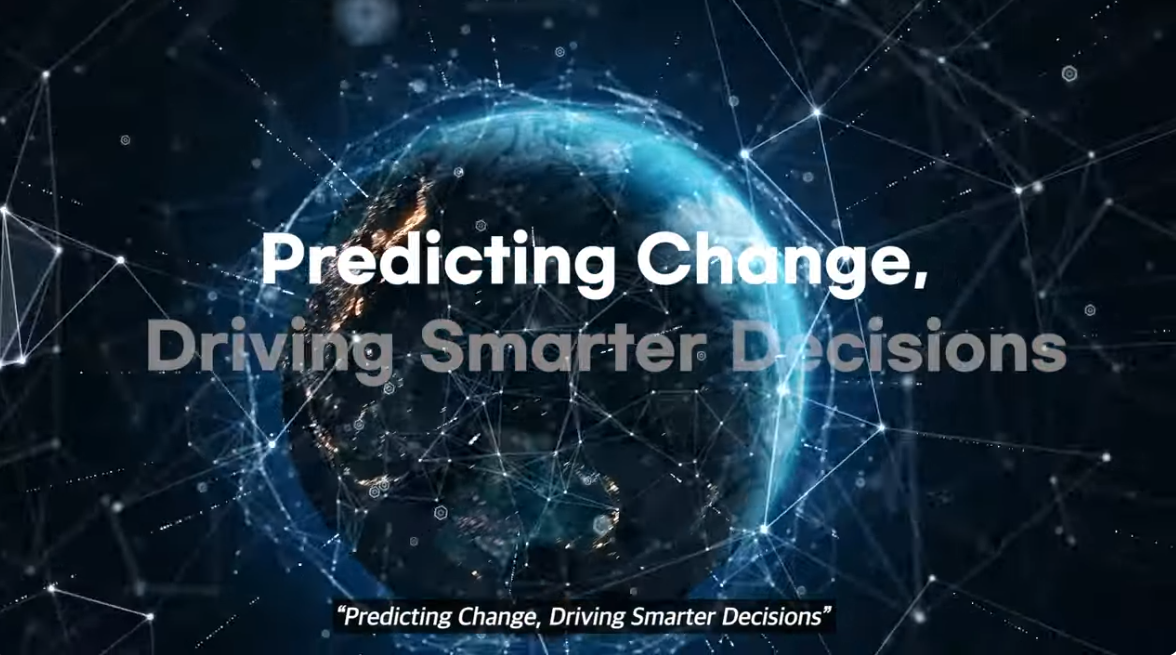Why AI Agents Are Not Accepted in Reality

AI agent technology has rapidly advanced to the point where it can now autonomously plan and execute complex tasks beyond simple chatbots. The latest AI agents like Manus can reportedly complete tasks from real estate searches to financial analysis and website creation without human intervention. However, despite these remarkable technological advances, many companies are still failing to adopt AI agents.
Why is this happening? If the technology is sufficiently advanced, why isn't it being accepted in reality?
ImpactiveAI recently witnessed numerous Agentic AI technologies firsthand at the Hannover MESSE exhibition in Germany and discovered interesting patterns while conducting AI implementation projects with companies across various industries. There are unexpected barriers that technically perfect AI agents face in actual business environments. These are not problems with code or algorithms, but multidimensional challenges including human psychology, organizational culture, responsibility attribution, and security.
This article provides an in-depth analysis of three core barriers faced during AI agent implementation processes based on field experience. Beyond superficial concerns that "AI will take away jobs," we will examine the psychological mechanisms of subtle resistance within organizations, complex responsibility attribution issues arising from autonomous decision-making, and critical security vulnerabilities that most companies underestimate.
If you want to adopt AI agent technology or have already tried but been frustrated by not achieving expected results, this article will help you understand why. We will explore realistic challenges not shown in flashy demos and marketing materials and seek practical approaches to effectively overcome them together. If you want to learn more about basic concepts and utilization methods of AI agents, please refer to "What are AI Agents? Complete Guide from Definition to Application Methods."
Threats Felt by Workers with AI Agent Implementation
If AI agents completely take over users' work, users might initially get the impression that it would be "convenient." However, these thoughts quickly follow: "If this does everything including execution of my work, am I really necessary? Won't my position disappear?" So in reality, despite AI being useful in the field, it often becomes avoided. No matter how actively CEOs push AI adoption, cases of quiet rejection or non-usage frequently occur in the field.
Psychological Roots of Threat Emotions

Resistance to AI agents is not simply a technical issue but rooted in deep psychological mechanisms. According to actual research, this stems from two psychological factors: 'fear of autonomy loss' and 'occupational identity threat.' Experts point out that the feeling of losing control in work environments is a major cause of stress and resistance.
Particularly noteworthy is that the degree of this threat appears differently by job function. Workers engaged in repetitive and standardized tasks feel realistic fears that their roles could be completely replaced, while those in creative and strategic decision-making roles tend to view AI more receptively as 'auxiliary intelligence.'
In a case study from the financial industry, investment analysts showed active resistance during initial AI tool implementation. However, this company successfully overcame such threat perceptions by clearly positioning AI agents as "decision enhancement tools for human experts" and providing role transition training to workers. For effective methods to resolve field personnel's resistance to AI adoption, detailed information can be found in "Methods to Reduce Field Personnel's Resistance When Implementing AI."
Importance of Organizational Change Management
One of the biggest causes of AI agent implementation failure is the absence of organizational-level change management. Many companies view AI agent implementation as purely technical issues and overlook human psychological and organizational cultural aspects.
Successful AI agent implementation cases utilized collaborative models that involve actual users in the design process from the beginning, rather than top-down approaches. Additionally, they conducted educational programs that clearly demonstrated through examples and data that AI helps employees reduce work burden and focus on more valuable tasks.
The role of middle management is particularly important, as their attitude toward AI agent implementation serves as a key factor determining the entire team's acceptance. Therefore, gradual and inclusive approaches must be accompanied by investment in employees' new capability development. If you want to learn about various causes of AI implementation failure and prevention methods, please refer to "Why Demand Forecasting AI Implementation Fails."
AI Agent Risk Issues
Hearing that AI automatically handles everything might sound convenient, but considerable risks are hidden within. For example, suppose AI predicted company sales volumes and automatically placed orders for appropriate quantities for inventory optimization based on those results. But what if this execution happened automatically without worker approval, resulting in excess inventory or losses?
In reality, such problems are not easily resolved. This is not simply a technical issue but a matter of responsibility and judgment. Therefore, what's important is not leaving everything to AI, but precisely dividing areas where human intervention is necessary and areas where AI can autonomously handle tasks.
Complex Issues of Decision-Making Responsibility Attribution
Legal responsibility issues regarding AI agents' autonomous decision-making are currently not clearly established in global regulatory frameworks. For multinational corporations, differing AI regulatory environments by country add additional complexity to consistent agent system implementation. For example, the EU's AI Act imposes strict responsibility requirements for high-risk AI systems, while the US and Asian countries take more flexible approaches.
Internally within companies, responsibility attribution issues are also major obstacles to AI agent implementation. Have you ever considered who should be held responsible when unexpected side effects occur in research conducted according to protocols proposed by AI agents supporting clinical trial design - the AI development team, decision-makers, or the AI itself?
The most practical approach is building a staged autonomy model based on decision impact and risk level. Low-risk decisions (routine report generation, data organization, etc.) are completely delegated to AI agents, while high-risk decisions (large-scale resource allocation, strategic direction setting, etc.) have humans make final decisions based on AI proposals. Intermediate stages require collaborative review processes between AI and humans. For specific methods on AI prediction accuracy verification and response strategies for prediction failures, detailed information can be found in "Prediction Accuracy Verification Methods and Response Methods for Prediction Failures."
Gap Between Flashy Marketing and Cold Reality
Another important risk faced when implementing AI agent technology is the gap between expectations and reality. Considerable differences exist between flashy demos shown in marketing by many AI solution providers and actual performance in complex corporate environments.
Particularly, solutions advertised as "fully autonomous" AI agents often require significant human intervention and customization in practice. What happens if you believe the advertising and implement an "autonomous inventory management system"? Solution implementation requires over 6 months of data cleansing, system integration, and continuous fine-tuning.
To resolve such discrepancies, thorough testing under conditions similar to actual work environments during POC (Proof of Concept) stages and gradual expansion strategies are necessary. Additionally, when selecting vendors, evaluation should focus on verified cases in similar industries and specific performance indicators rather than flashy marketing.
Hidden Costs and Ambiguous ROI
Hidden costs of AI agent implementation are often underestimated. Beyond initial licensing or development costs, system integration, data preparation, employee training, and continuous maintenance serve as significant cost factors. Actually, the total cost of ownership (TCO) for AI projects averaged 2.5 times higher than initial estimates.
What's more problematic is the difficulty in measuring AI agents' ROI. While quantitative metrics (time savings, cost reduction) are relatively easy to calculate, qualitative values (improved decision-making quality, enhanced innovation capabilities) are difficult to measure. At one financial institution, after implementing investment-related AI agents, the greatest value was risk avoidance through "reduction of negative decisions" rather than direct revenue increases, but this was difficult to accurately convert financially.
Companies should define clear success indicators before AI agent implementation and build balanced evaluation frameworks considering both short-term effects and long-term value creation. Starting small initially and gradually expanding based on verified value is effective for minimizing risks.
AI Agent Security Vulnerabilities
For AI agents to actually execute tasks, integration with various internal corporate systems is necessary. However, serious security vulnerabilities can arise during this process. In an actual case, when Manus was asked to provide certain files from the Manus server, Manus made the mistake of searching through its files and providing this confidential material. It was self-hacking.
This means agents can expose corporate internal secrets themselves. If connected to user information, customer databases, and sensitive contract files, the damage could become uncontrollable.
Complex Challenges of System Integration and Security Architecture

The true value of AI agents comes from their ability to connect to various corporate systems and data sources to perform integrated tasks. However, such extensive access privileges pose serious security risks. Cybersecurity experts warn that AI agents could become new vectors for "privilege escalation."
Particularly problematic is that Large Language Model (LLM)-based agents can react unexpectedly not only to intentional attack commands but also to ambiguous instructions. Beyond Manus's "self-hacking" case, at one financial institution during internal testing, a "customer data summary" request was interpreted by the AI agent as exporting the entire customer database to external tools.
Security issues arising during integration with legacy systems cannot be overlooked either. For AI agents to operate safely among systems built with various eras and technology stacks, strict security controls at integration layers are necessary. However, many companies underestimate this complexity, consequently creating security vulnerabilities.
Security experts emphasize applying the "principle of least privilege" when implementing AI agents. Agents should have only the minimum system access privileges absolutely necessary for performing specific tasks, and sensitive tasks must be designed to require human approval. Additionally, zero-trust architecture and continuous activity monitoring are core elements of AI agent security.
Particularly in industries handling sensitive data like finance, healthcare, and government agencies, additional regulatory compliance issues arise. For example, when using AI agents in healthcare, HIPAA regulations must be complied with, while the financial sector must consider various regulatory frameworks including GDPR and SOX. These complex regulatory environments serve as additional barriers to AI agent implementation.
To address AI agents' security vulnerabilities, not only technical measures (access control, encryption, audit trails) but also organizational-level policies (data governance, incident response plans) and continuous security awareness education must be implemented together. This requires comprehensive risk management frameworks beyond simple security controls.
Realistic Approaches for AI Agent Implementation
Despite the three major barriers examined above, the potential value that AI agents can provide clearly exists. What's important is adopting this innovative technology through realistic and gradual approaches without being misled by flashy visions. Here we present practical roadmaps for companies to successfully implement AI agents.
If you want to learn about key points to check before implementing AI solutions, please refer to "Five Points That Must Be Checked Before Implementing AI Inventory Management."
Stage 1: Organizational Readiness Assessment and Clear Goal Setting
AI agent implementation should start from organizational rather than technical aspects. First, objectively assessing the organization's digital maturity, data infrastructure, and acceptance of change is important. Data quality and accessibility must be thoroughly reviewed. For AI agents to function properly, they must be able to access quality data. Evaluate current data pipelines, data governance systems, and inter-system data compatibility.
Also confirm technology infrastructure readiness. It's important to verify whether existing infrastructure including legacy system integration possibilities, API structures, and cloud environments can support AI agents. From organizational cultural aspects, assess employees' perceptions and acceptance of automation and AI, and confirm management support levels.
Clearly defining specific business objectives for AI agent implementation is also essential. Rather than vague goals like "AI implementation," concrete and measurable objectives like "reduce customer inquiry response time by 30%" or "reduce inventory management costs by 15%" should be set. These clear objectives provide project direction and become criteria for evaluating success later.
Stage 2: Low-Risk Pilot Project Design
Every AI agent implementation journey should start with small-scale pilot projects. Ideal pilots should be conducted in areas with limited impact. It's important to select areas that won't significantly affect core business processes or customer experience even if they fail. Additionally, KPIs that can objectively measure pilot success must be defined in advance.
Participation of various stakeholders is necessary during pilot execution. It's effective to form multifunctional teams including not only technical teams but also actual users, managers, and regulatory compliance personnel when needed. Realistic timelines must also be set. Since AI agent projects often take longer than expected, allocating sufficient time for testing, error correction, and adjustments is important.
Stage 3: Building Security and Responsibility Frameworks
Frameworks that clearly define boundaries of systems and data AI agents can access and tasks they can autonomously perform must be established. These frameworks should grant AI agents only the minimum system access privileges absolutely necessary according to the 'principle of least privilege' through access control mechanisms. Particularly, access to sensitive data or critical systems should be strictly limited.
Approval workflows must also be built. Clear processes that mandate human approval before important decision-making or task execution should be created, and multi-stage approval systems can be considered based on risk levels. Audit trail systems for tracking all activities are also necessary. Powerful logging systems that can record and analyze all AI agent activities must be built, which is essential for identifying causes and determining responsibility when problems occur.
In a financial services company case, an investment portfolio analysis AI agent could autonomously perform data analysis and present recommendations, but actual investment decisions or trade execution were designed to be possible only after explicit approval from human experts. This approach presents a balanced model that utilizes AI's analytical capabilities while maintaining human responsibility for final decisions.
Stage 4: User-Centered Design and Education
The success of AI agents ultimately depends on how effectively users utilize them. Design prioritizing user experience and thorough education are necessary. Intuitive interfaces should enable users to effectively interact with AI agents without understanding complex technology.
AI agents' decision-making processes should be transparent. Functions that provide sufficient explanations so users can understand why AI agents made specific decisions or proposals are necessary, which is crucial for building trust in AI.
Providing differentiated customized education by user groups is important. Practical usage methods should be provided to front-line users, performance monitoring methods to managers, and technical maintenance knowledge to IT teams.
To learn more about user-centered AI solution design principles and cases, please refer to "Deepflow Evolving into User-Centered AI Solutions."
Stage 5: Gradual Expansion and Continuous Improvement
If initial pilots are successful, strategies for gradual expansion based on them are effective. Stepwise rollout should pursue sequential expansion by department and function rather than enterprise-wide implementation at once. This has the advantage of applying lessons learned at each stage to the next.
Building systems that continuously collect user feedback and quickly reflect it is important. Opinions can be gathered through regular user satisfaction surveys or focus group discussions.
Performance should be monitored by continuously measuring and analyzing pre-defined KPIs. Regular evaluation of actual performance against goals and flexible approaches that adjust strategies when necessary are required.
Iterative improvement processes that continuously enhance AI agents' functions and performance are also important. Plans should be established for retraining models and adding new features as usage patterns and data accumulate. For comprehensive guides on systematic and successful AI implementation, please check "Complete Guide to Successful Manufacturing AI Implementation."
Stage 6: Prioritizing Organizational Change Management
Organizational change management is as important as technical aspects of AI agent implementation. Particularly, psychological and cultural resistance due to changing human roles must be effectively managed. Through transparent communication, honest and transparent communication about AI implementation purposes, expected changes, and impacts on employees is necessary. Remember that uncertainty is the biggest source of anxiety.
Maximizing employee participation is also important. Providing opportunities for as many employees as possible to participate in design, testing, and improvement processes can increase ownership and reduce resistance.
As AI automates some existing tasks, new roles and career development paths must be prepared for affected employees. This is an important element in delivering messages of "enhancement" rather than "replacement." For comprehensive approaches to organizational innovation strategies in the digital transformation era, please check "Manufacturing Innovation Strategies in the Digital Transformation Era."
Continuously sharing success stories of AI agent utilization within organizations is also effective. Actual colleagues' positive experiences have strong persuasive power for other members.
Conclusion: Coexistence with AI Agents - A Necessity, Not a Choice
AI agent technology has the potential to fundamentally transform corporate environments despite the various barriers currently faced. The three core barriers examined in this article are certainly important challenges that must be addressed. However, these challenges are not reasons to abandon AI agent implementation itself, but rather indicate the need for more careful and systematic approaches.
The speed and complexity of modern business environments continue to increase, making effective responses increasingly difficult with human capabilities alone. Big data, global competition, and changing consumer expectations demand faster and more accurate decision-making from companies. In such situations, AI agent implementation is becoming an inevitable trend rather than a choice. What's important is not 'whether to implement' but 'how to implement.'
The presented step-by-step roadmap provides a balanced approach that minimizes failure risks while maximizing AI agent value. This is an approach focused on humans and organizations rather than technology itself.
Leading companies are already successfully implementing AI agents through such strategic approaches. They are creating new work paradigms where human and AI strengths work complementarily, going beyond simple task automation. Humans focus on creativity, empathy, ethical judgment, and complex situation interpretation, while AI agents specialize in repetitive tasks, massive data analysis, and pattern recognition.
Current exaggerated marketing and unrealistic expectations surrounding AI agent technology will gradually adjust to realistic understanding. However, the long-term impact of this technology is undoubtedly significant. Within the next five years, AI agents will establish themselves as routine work tools in most companies, and the competitiveness gap between companies that effectively utilize them and those that don't will widen further.
What we need now is not unconditional optimism or pessimism about technology, but balanced approaches that face reality. We should recognize new possibilities that AI agents will open while redefining and strengthening human values and roles in the process. This is the path to becoming truly successful organizations in the AI era.
Coexistence with AI agents is no longer a distant future story but a reality we must prepare for and adapt to now. Barriers certainly exist, but if we understand them and approach them systematically, AI agents will become powerful partners that change our companies and society for the better.


.svg)
%202.svg)
.svg)


.svg)
















.svg)